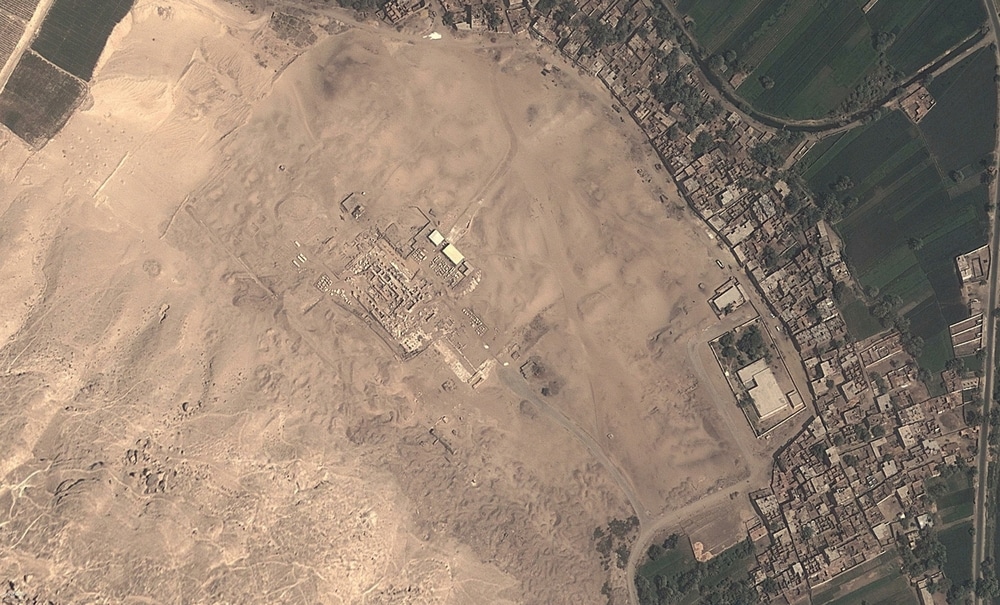USA (Birmingham)
Satellite Archeology is all about perspective. From the outer edges of the planet’s atmosphere, where sky meets space, the view into our planet’s past ironically becomes clear by virtue of distance. Analogous to seeing the forest from the trees, when viewed from such a great distance, human-made structures that are invisible on the ground, can clearly be identified from space.
There’s a wonderful poetry to Sarah Parcak’s project. Described as ‘The Indiana Jones of the 21st Century’, the assistant professor of Anthropology and Director of the Laboratory for Global Observation at the University of Alabama at Birmingham, has developed a potentially revolutionary new technology to locate and study ancient ruins. Satellite cameras photograph in infrared to pinpoint structures invisible to the naked eye. So far her team have uncovered 17 pyramids, 1,000 tombs, and over 3,100 settlements in Egypt alone.
In November 2015 Parcak was awarded the 2016 TED Prize and $1 million. She used the the prize money to democratise archaeological discovery with GlobalXplorer° – a digital platform that will crowdsource the discovery and protection of ancient sites using satellite imagery. The new global alarm system lets you hunt for hidden heritage sites. Users can explore ancient sites, analysing land with clues, keys, and examples, tagging imagery that appears to show new sites or archaeological looting.
What’s fascinating about the space archaeologist and Egyptologist’s approach is that the technology is being appropriated for entirely different means than what was originally intended. A significant number of advances in human society have been achieved through technological appropriation – in particular using weapons-based technology for peaceful purposes.
“The world’s hidden heritage contains clues to humankind’s collective resilience and creativity,” says Parcak. “It’s up to all of us to protect this heritage, and with GlobalXplorer we are empowering a 21st century army of global explorers to discover and protect our shared history.”
GlobalXplorer wants to encourage participation on a global scale and share archaeological discovery. Everyone can have a chance to become amateur space archaeologists. Join the movement here.
Bio
Peter Crnokrak is a London based computational artist whose practice utilises design language to communicate meaning in complex systems with work integrating research, analysis and experimental technologies.
Project leader
Sarah Parcak, Associate Professor and Director, Laboratory for Global Observation Dept. of History and Anthropology, The University of Alabama at Birmingham
Support the Atlas
We want the Atlas of the Future media platform and our event to be available to everybody, everywhere for free – always. Fancy helping us spread stories of hope and optimism to create a better tomorrow? For those able, we'd be grateful for any donation.
- Please support the Atlas here
- Thank you!




